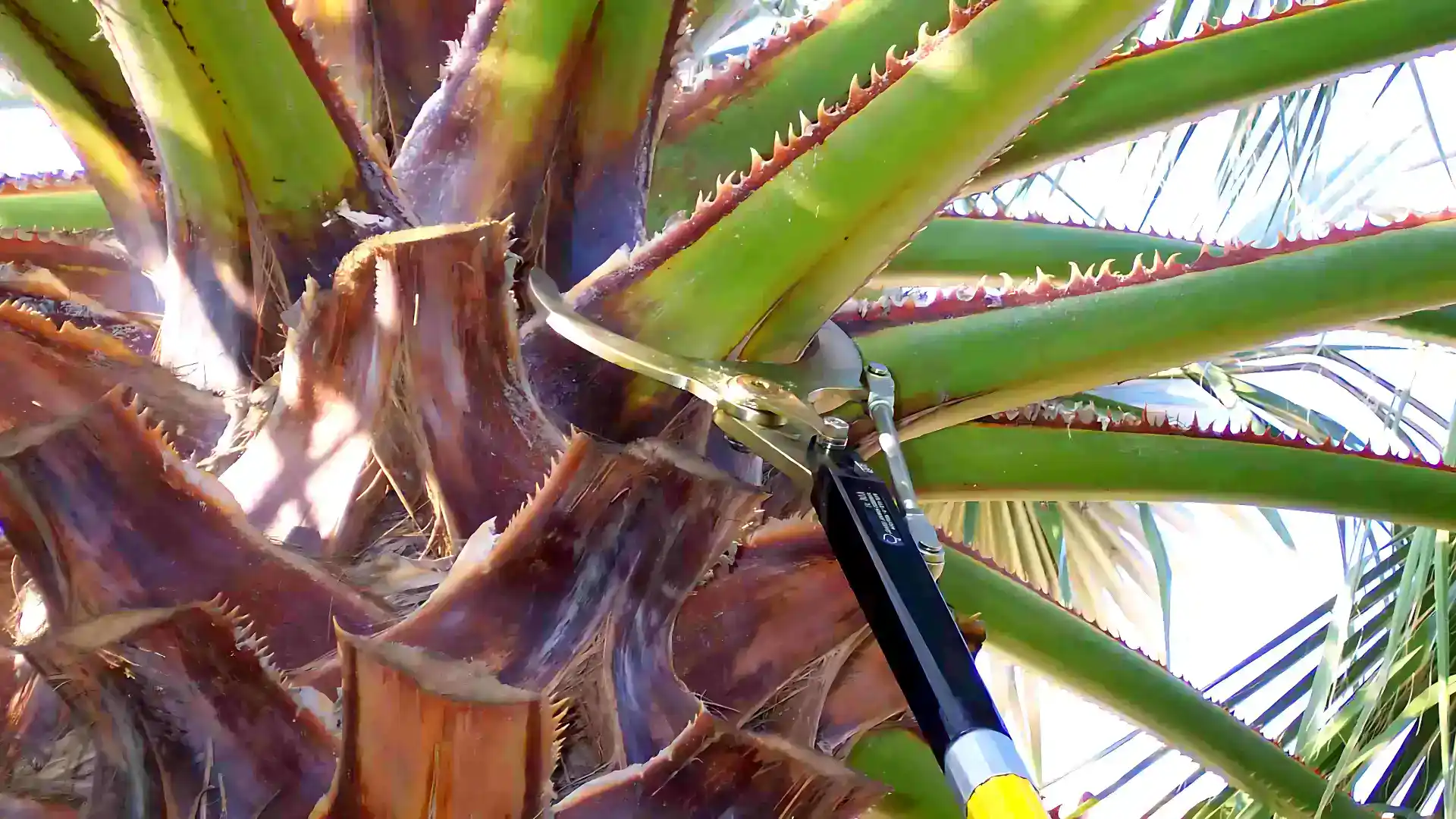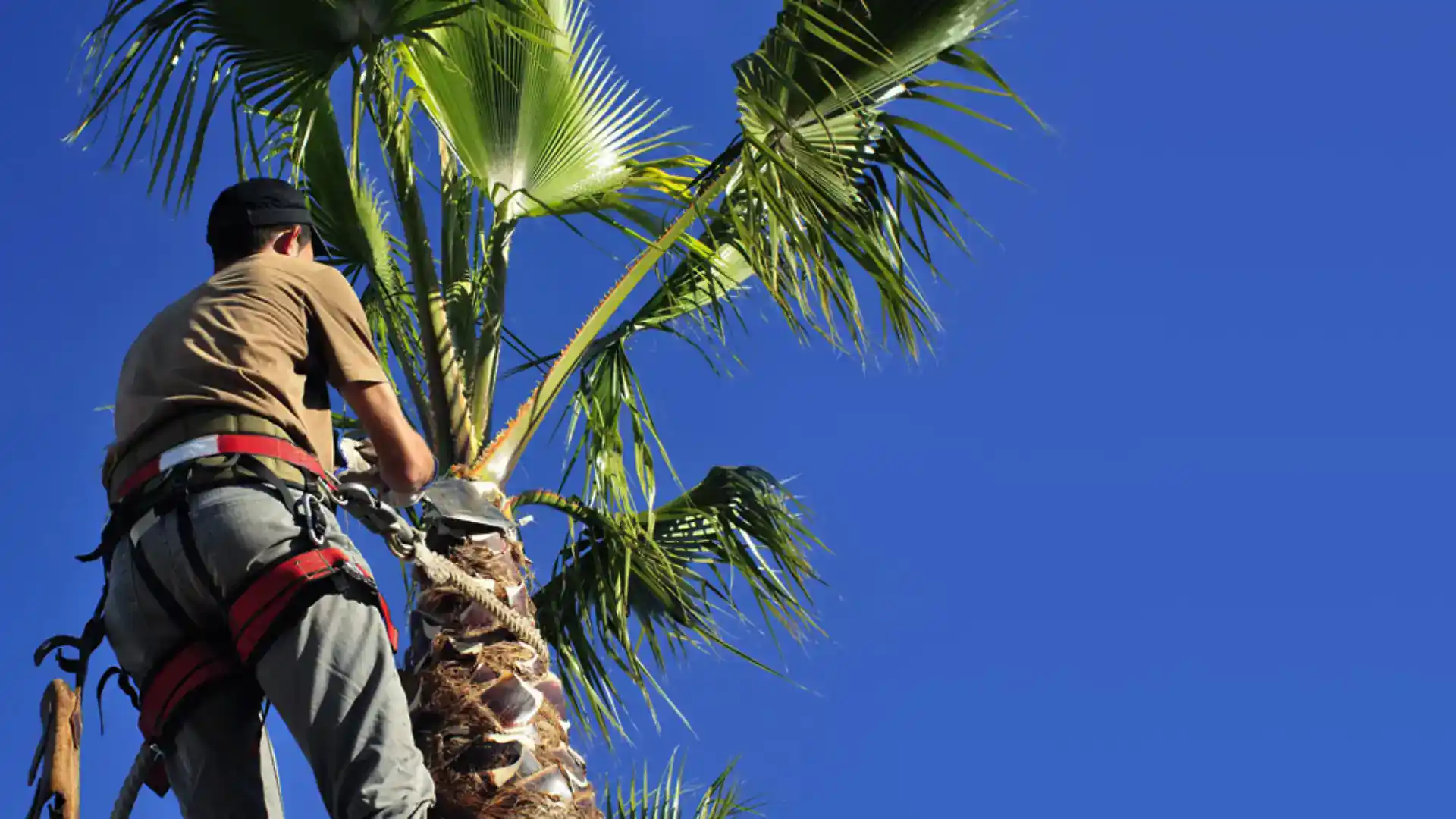If you’ve driven through Mesa, you’ve likely seen palm trees with smooth, polished trunks that look almost decorative. This process is called palm tree skinning, and it has become popular in both residential and commercial landscaping. But many homeowners wonder: is palm tree skinning safe for the tree, and is it even necessary?
At Fronds Palm Trimmers, we’re asked this question often. In this blog, we’ll explain what palm tree skinning is, the pros and cons, and when it makes sense for Mesa homeowners to consider it.
What Is Palm Tree Skinning?
Palm tree skinning, sometimes called “skinning the trunk,” is the process of removing the rough, fibrous bases of old fronds that remain attached after trimming. Over time, as new fronds grow, the old bases harden and create a layered, textured trunk. Skinning strips away these bases, leaving the trunk smooth.
The result is a sleek, uniform appearance that many people find attractive. In some areas, skinned palms are a popular landscaping trend, especially around pools, resorts, and shopping centers.
Why Do People Skin Palm Trees?
- Aesthetic Appeal
A smooth, polished trunk looks neat and elegant. Many homeowners choose skinning simply for the clean look it provides. - Pest Prevention
The rough layers of old frond bases can harbor insects like scorpions, roaches, and rodents. Skinning removes those hiding spots. - Fire Safety
Old frond bases are flammable. Removing them can reduce fire risks during Arizona’s hot, dry seasons. - Property Value
Landscapes with well-maintained palms, including skinned trunks, often appear more upscale and increase curb appeal.
Is Palm Tree Skinning Safe?
Skinning is safe when performed correctly by a trained professional, but it carries risks if done improperly.
- Damage to the Tree: Cutting too deeply into the trunk can injure the palm’s living tissue. Unlike other trees, palms do not heal from wounds, so permanent damage can occur.
- Weakened Trunk: If too much material is removed, the trunk may be more vulnerable to environmental stress.
- Increased Maintenance: Once a palm is skinned, it will need regular upkeep to maintain the look.
For these reasons, skinning should always be handled by an experienced palm tree trimmer.
Is Palm Tree Skinning Necessary?
The short answer: no, skinning is not required for palm tree health. Palms naturally shed fronds and can thrive without ever being skinned. Skinning is purely optional and based on the homeowner’s preference for appearance, pest management, or fire safety.
That said, there are cases where it makes sense:
- If pests are a recurring problem in your yard.
- If your palms are near outdoor living spaces where safety and appearance matter.
- If you want a polished, resort-style look for your landscaping.
The Best Time to Skin Palm Trees in Mesa
The optimal time to skin palms is typically in late spring or early summer, around the same time you’d schedule regular trimming. This ensures the tree is free of old fronds before the heat and monsoon season arrive.
Why You Should Hire a Professional
Palm tree skinning requires special tools and knowledge of palm biology. At Fronds Palm Trimmers, we:
- Use sharp, professional-grade knives and saws designed for skinning.
- Remove only the old frond bases without cutting into the trunk.
- Work safely at heights, using proper climbing gear or lifts.
- Ensure a clean, smooth finish without harming the palm.
DIY skinning often leads to deep cuts, unsafe ladder work, or incomplete removal that looks uneven. Professionals protect both the tree and your safety.
Conclusion
Palm tree skinning is an optional service that creates a clean, elegant look while reducing pests and fire hazards. Although not necessary for tree health, it can add value and style to your property when done correctly. Mesa homeowners should always rely on trained professionals to ensure their palms remain healthy and strong.
If you’re considering palm tree skinning, contact Fronds Palm Trimmers. Our team combines skill, experience, and care to give your palms the smooth, beautiful appearance you want without compromising their health.



